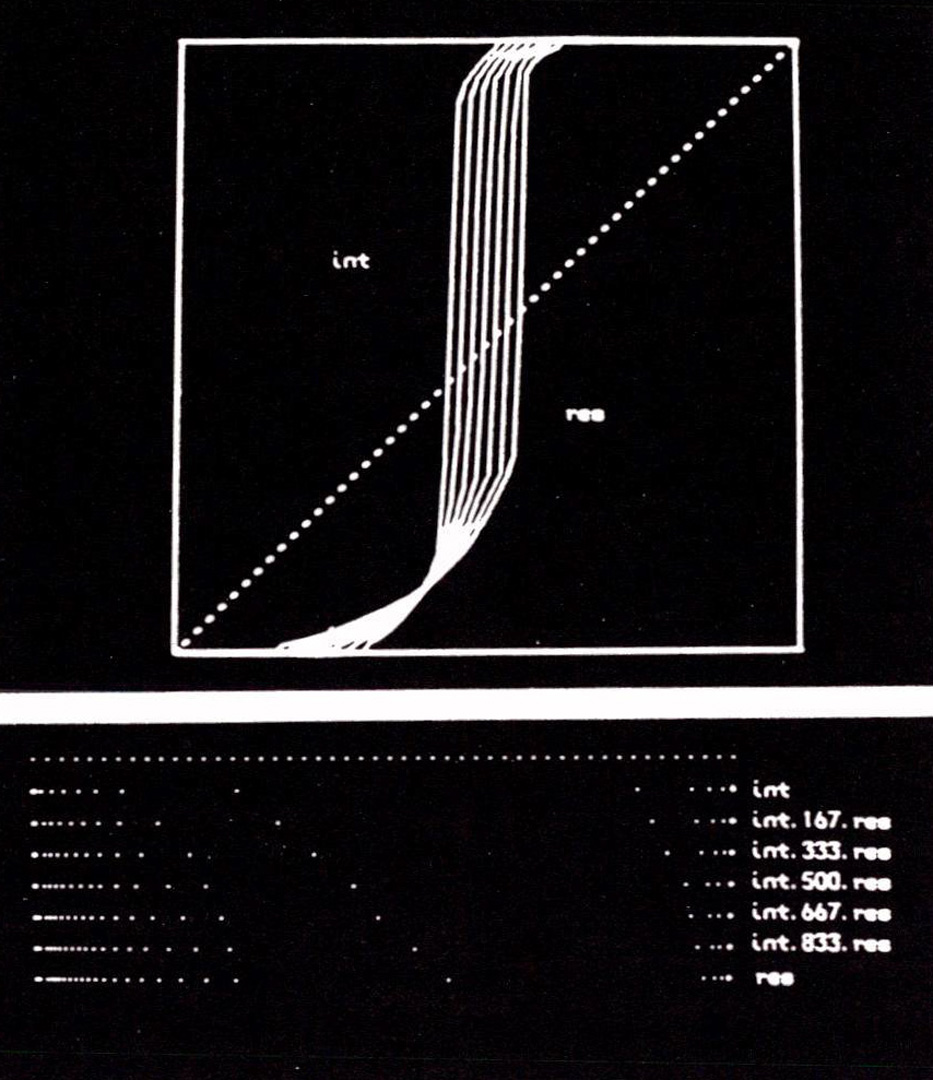“Computer graphic modeling of american sign language” by Loomis, Poizner, Bellugi, Blakemore and Hollerbach
Conference:
Type(s):
Title:
- Computer graphic modeling of american sign language
Presenter(s)/Author(s):
Abstract:
The essential grammatical information of American Sign Language (ASL) is conveyed through changes in the movement and spatial contouring of the hands and arms. An interactive computer graphic system is described for the analysis and modeling of sign language movement. This system consists of four components. The first component reconstructs actual movements in three dimensions and allows the user to interactively segment and transform the data for later analysis. The second component allows a user to interactively create synthetic signs by specifying angle functions in a jointed model. The third component provides a novel technique for manipulating movement quality independently of spatial path. The fourth component allows the building of complex stimuli and real-time stimulus sequencing for psycholinguistic experiments. The emphasis is on interactive techniques and data structures that allow analysis and modeling of the complex hand and arm movements of American Sign Language.
References:
1. Badler, N. I., Ed. Modeling the human body for animation. (Special issue devoted to the topic). IEEE Computer Graphics and Applications, 2, 9, (November 1982).
2. Badler, N. I. and Morris, M. A. Modelling flexible, articulated objects. Proceedings of the ONLINE Conference, (1982).
3. Badler, N. I., O’Rourke, J. and Kaufman, B. Special problems in human movement simulation. Computer Graphics (Proceedings of SIGGRAPH 1980), 14, 3, (July, 1980), 189-197
4. Badler, N. I. and Smoliar, S. Digital representation of human movements. ACM Computing Surveys, 11, (March 1979), 19-38.
5. Baecker, R. M. Picture-driven animation. Proceedings of the Spring Joint Computer Conference, (May 1969), 273-288.
6. Baecker, R. M., Miller, D. and Reeves, W. Towards a laboratory instrument for motion analysis. Computer Graphics. 15, 3 (August 1981), 191-197.
7. Bell System, UNIX time-sharing system (entire issue devoted to UNIX). The Bell System Technical Journal 57, 6, Part 2 (July-August 1978).
8. Bellugi, U. The structuring of language: Clues from the similarities between signed and spoken language. In U. Bellugi and M. Studdert-Kennedy (Eds.), Signed and Spoken Language: Biological Constraints on Linguistic Form. Dahlem Konferenzen. Weinheim/Deerfield Beach, Fla.: Verlag Chemie, (1980), 115-140.
9. Bellugi, U. and Studdert-Kennedy, M. (Eds.). Signed and Spoken Language:Biological Constraints on Linguistic Form. Dahlem Konferenzen. Weinheim/Deerfield Beach, Fla.: Verlag Chemie, (1980).
10. Donkoh, S. Computer analysis helps train athletes. CIPS Review., (July-August 1980), 14-15.
11. Futrelle, R. P. GALATEA: Interactive graphics for the analysis of moving images. Information Processing 74. Proceedings of the 1974 IFIP Conference, North-Holland Publishing Company, 712-716.
12. Futrelle, R. P. and Potel, M. J. The system design for GALATEA, an interactive real-time computer graphics system for movie and video analysis. |Computers and Graphics,1 Pergamon Press, (1975), 115-121.
13. Hildebrand, F. B. Introduction to Numerical Analysis. (1956).
14. Johansson, G. Visual perception of biological motion and a model for its analysis, perception and Psychophysics, 14, (1973), 201-211.
15. Johansson, G. Visual motion perception. Scientific American, 232, 6, (1975), 76-89.
16. Klima, E. S. and Bellugi, U. The Signs of Language. Cambridge, Mass.: Harvard University Press, 1979.
17. Platt, S. M. and Badler, N. I. Animating facial expression. Computer Graphics, 15, 3, (August 1981), 245-252.
18. Poizner, H. Visual and ‘phonetic’ coding of movement: Evidence from American Sign Language. Science, 212, (1981), 691-693.
19. Poizner, H. Perception of movement in American Sign Language: Effects of linguistic structure and linguistic experience.# Perception and Psychophysics, 33, (1983), 215-231.
20. Poizner, H., Bellugi, U. And Lutes-Driscoll, V. Perception of American Sign Language in dynamic point-light displays. Journal of Experimental Psychology: Human Perception and Performance, 7, (1981), 430-440.
21. Poizner, H., Newkirk, D. and Bellugi, U. Processes controlling human movement: Neuromotor constraints on American Sign Language.# Journal of Motor Behavior, 15, (1983), 2-18.
22. Potel, M. J. and Mackay, S. A. Graphics input tools for interactive motion analysis. |Computer Graphics and Image Processing, 14, (1980), 1-23.
23. Shantz, M. and Poizner, H. A computer program to synthesize American Sign Language. Behavior Research Methods and Instrumentation, 14, 5, (1982), 467-474.
24. Winter, D. A., Greenlaw, R. K. and Hobson, D. A. Television-computer analysis of kinematics of human gait. Computers and Biomedical Research, 5, (1972), 498-504.
25. Woltring, M. J. New possibilities for human motion studies by real-time light spot position measurement. Biotelemetry, 1, (1974), 132-146.
26. Zeltzer, D. Motor control techniques for figure animation. IEEE Computer Graphics and Applications, 2, 9, (November 1981), 53-60.




